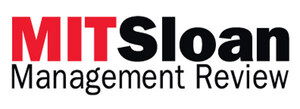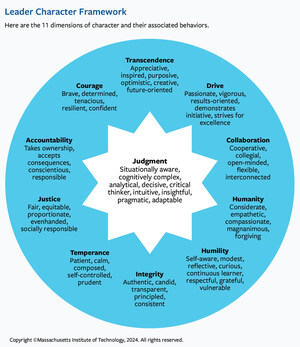CAMBRIDGE, Mass., June 8, 2021 /PRNewswire/ -- As the nation marks one year since the killing of George Floyd, companies and employees are struggling to create actionable plans to address racial equity. One main culprit: White people's unwillingness to acknowledge systemic racism. An MIT Sloan Management Review article released today delves into Whites' defensive reactions and explains how leaders can counter, defuse, and dismantle them.
"Leaders need to treat employees' resistance to institutional changes designed to address systemic racism with the same determination with which they treat any opposition to a strategic organizational change," says Rosalind M. Chow, article coauthor and tenured associate professor of organizational behavior and theory at Carnegie Mellon University. "Identify and educate those who need more guidance and can be persuaded, and let go of those who are unwilling to participate in the vision."
Backlash to racial equity efforts often begins from a lack of awareness of racial identity among White people. This is a hallmark of racial power. Overtly racist and prejudiced responses as voiced by White nationalists are one form of backlash and are relatively easy to recognize. Backlash also comes in more subtle forms that can be disguised as concerns about equity and equality.
The article titled, "Fighting Backlash to Racial Equity Efforts," is backed by 20 years of experimental research and demonstrates how White people often respond defensively to racial equity efforts. The article describes three categories of unproductive backlash responses – deny, distance, and distort – and points to a fourth response that is constructive: dismantle.
3 Actions Corporate Leaders Can Take to Counter Backlash Responses
1. Counter denial and distortion with data disclosure – Disclose demographic data regarding recruiting, hiring, promotion, leadership, and retention when white people deny that racism is a significant problem. These disclosures directly refute the denial and distortion backlash responses by making it clear who is advantaged and disadvantaged.
What's noteworthy about the present push is its aim at asking companies for aggregated, and in particular, disaggregated data. If companies are composed 14% of Black or African American employees, but 75% of them are employed at lower-level jobs, this would meet the standard of diversity of racial representation but not a standard of racial equity.
2. Counter distancing and distortion through collaboration – Invite White people to actively engage in efforts toward racial equity beyond the ubiquitous courageous conversation or listening tour. By explicitly calling on White Americans to act on equity, it makes it clear that White people have a seat at the table and an obligation to be part of the solution.
Highlight White employees who participate in equity efforts. Individuals who are viewed as "heroes" in the organization provide a cue to others about what behaviors are valued.
Collaboration also requires that leaders engage seriously with White employees' fears of being penalized for doing or saying the wrong thing while they are learning about racism. A combination of safe learning spaces and clear guidelines regarding shared expectations for behavior helps reassure all employees that learning is valued and that violations are treated both fairly and seriously.
3. Counter distortion with a vision grounded in justice – Base your business case for diversity on widely held moral values of fairness and equity, with justice as their goal. Framing vision in these terms allows leaders to acknowledge the reality that diversity, equity, and inclusion (DEI) efforts require companies to prioritize long-term equity and organizational justice over the psychological discomfort of some employees and the possibility of short-term losses.
Research shows that openly recognizing this discomfort ahead of time can reduce White backlash, making White employees less likely to distance themselves and more likely to accept the reality of systemic racism. When their hard work is acknowledged, White employees can become less prone to backlash and more likely to recognize racial privilege.
"The key to effectively responding to resistance is leveraging that human need to think of ourselves as good," says L. Taylor Phillips, article co-author and assistant professor at the NYU Stern School of Business. "If White individuals see a role for themselves in the dismantling of racist systems, they will choose to restore justice."
The MIT Sloan Management Review article, "Fighting Backlash to Racial Equity Efforts," provides organizational leaders with practical and actionable recommendations to preempt the many backlash tactics that have been and will be made against racial equity work. By successfully countering such backlash, business leaders and organizations will be better positioned to do the hard work of transformational change needed to dismantle current systems of racism and achieve racial equity.
MEDIA CONTACT:
Veronica Kido
[email protected]
508-242-5134
About the Authors
Rosalind M. Chow is a tenured associate professor of organizational behavior and theory at Carnegie Mellon University.
L. Taylor Phillips is an assistant professor of management and organizations at the NYU Stern School of Business.
Brian S. Lowery (@brianloweryphd) is the Walter Kenneth Kilpatrick Professor of Organizational Behavior and senior associate dean at Stanford Graduate School of Business.
Miguel M. Unzueta (@unzueta) is a professor of management and organizations at the UCLA Anderson School of Management.
About MIT Sloan Management Review (MIT SMR)
At MIT Sloan Management Review (MIT SMR), we explore how leadership and management are transforming in a disruptive world. We help thoughtful leaders capture the exciting opportunities — and face down the challenges — created as technological, societal, and environmental forces reshape how organizations operate, compete, and create value.
SOURCE MIT Sloan Management Review

Related Links
WANT YOUR COMPANY'S NEWS FEATURED ON PRNEWSWIRE.COM?
Newsrooms &
Influencers
Digital Media
Outlets
Journalists
Opted In




Share this article